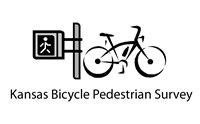Below is a reprint from the WellCommons website

Liberty Memorial Central Middle School students Eleanor Matheis, 13, foreground left, and Mary Reed Weston, 13, right, put on their helmets before bicycling home from school Tuesday, May 22 2012. Kansas has the 27th highest rate of injury-related deaths in the country, according to a new report. Kansas does not require children to wear helmets, but Lawrence has passed an ordinance requiring children, ages 16 and under, to wear a helmet, but doesn't enforce penalties. Traumatic brain injuries account for more than 50 percent of bicycle fatalities among people 20 and under. by Mike Yoder
Kansas has the 27th highest rate of injury-related deaths in the country, according to a new report. The rate, 60.4 per 100,000 people, also is higher than the national average.
To help prevent such fatalities, the report suggests the state implement a bicycle helmet law and expanding its motorcycle helmet law to include all riders.
“Injury is the third-leading cause of death for all age groups in the U.S. and one person dies from injury every three minutes,” said Andrea Gielen, director of the Johns Hopkins Center for Injury Research and Policy and a contributor to the report.
The highest rate was in New Mexico, where 97.8 per 100,000 people die from injuries. The lowest was New York with 37.1 per 100,000 people. Nationally, each year:
- 50 million are medically treated for injuries.
- 29 million are treated in emergency rooms for injuries.
- 2.8 million are hospitalized for injuries.
- $406 billion is lost in medical costs and productivity because of injuries.
- 180,000 die from injuries.
The report found that millions of injuries could be prevented annually if more states adopted policies and programs such as child safety seat and helmet laws. For example, an estimated:
- 69,000 lives were saved between 2006 and 2010 because of seat belts.
- 8,000 lives were saved between 2005 and 2008 because of motorcycle helmets.
- 1,800 lives saved because of child safety seats from 2005 to 2009.
The 76-page report, “The Facts Hurt: A State-By-State Injury Prevention Policy Report,” was released Tuesday by the Trust for America’s Health and the Robert Wood Johnson Foundation. The report looked at 10 key indicators that states can take to prevent injuries. Kansas met all but three:
• Motorcycle helmets. It does not have a law that requires helmets for all riders, but 19 states do. Kansas does require riders under age 18 to wear them.
• Bicycle helmets. Kansas does not require children to wear helmets, but 21 states do. Lawrence passed an ordinance in 2004 that requires children 16 and under to wear a helmet, but it doesn’t enforce penalties. Nationally, about 700 bicyclists are killed each year and 52,000 are injured. Bicyclists under age 16 account for 13 percent of those deaths.
• Teen dating violence prevention. Kansas did not receive an “A” grade in the teen dating violence laws analysis conducted by the Break the Cycle organization in 2010, but six states did. Kansas was among 16 states to earn a “C.” The analysis looked at access to civil protections, access to sensitive services and school response.
“We need to redouble our efforts to make safety, research and policy a national priority,” Gielen said. “There’s compelling evidence that we should adopt, implement and enforce many existing policies and programs to help spare millions of Americans from needless harm.”
The report is available at the healthyamericans.org.



